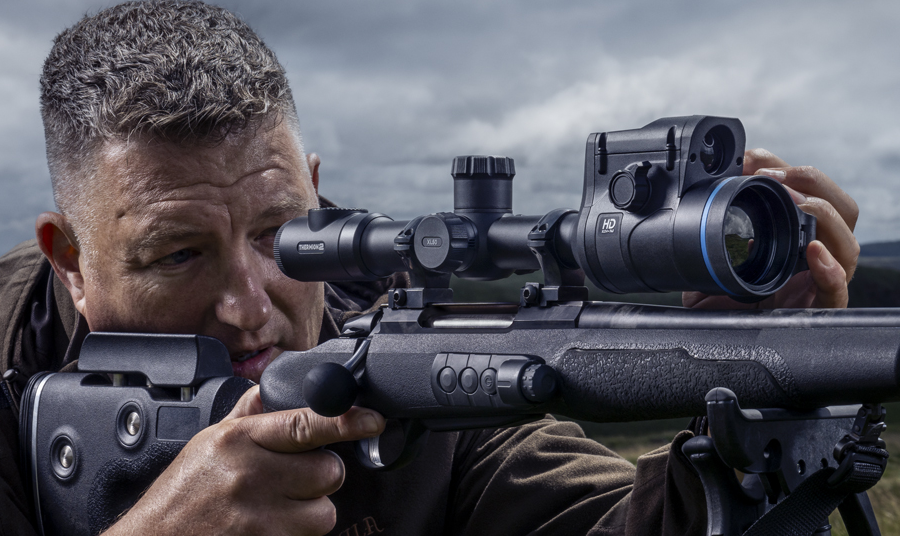A common misconception is that more magnification equals a better shooting experience. However, Pulsar's Thermion 2 LRF XL50's base magnification of 1.75x offers a significant advantage in terms of field of view. A wider field of view is a game-changer, especially when it comes to situational awareness and tracking your target.
While skilled hunters will take shots inside 200-300 yards, most responsible hunters will shoot animals if they are comfortable taking the shot, and many feel 100 yards and closer is a safe distance for shooting, especially since this is the range at which most feeder hunting is done at. The Thermion 2 LRF XL50 is perfectly capable for either long or short range shooting, and its base magnification of 1.75x along with its zoom increments of 2/4/8x are sufficient for most hunting situations.
Reduced Scope Sway
Aside from hunting concerns, shooting with higher magnifications often introduces scope sway. This instability can seriously affect shooting accuracy, especially when stabilizing platforms like tripods are not available. The Thermion 2 LRF XL50's lower base magnification helps mitigate scope sway, resulting in more precise and stable aiming.

The Thermion 2 LRF XL50's wide field of view, combined with its picture-in-picture mode helps facilitate accurate shots.
Enhanced Clarity with a Better Sensor
It's important to note that the Thermion XL50 relies on digital zoom rather than traditional magnification. Traditional magnification physically enlarges the image with lenses, while digital zoom enhances the digital image displayed on the riflescope’s screen. When this happens, the image clarity of an optic with a sensor like a 640x480 becomes blocky and pixelated, while on higher resolution sensors like the Thermion 2 LRF XL50, digitally zoomed images remain remarkably clear.
The 1.75x base magnification of the Thermion 2 LRF XL50 is supported by a high-resolution 1024x768 sensor. This combination ensures exceptional image clarity and detail, even at higher magnifications. In contrast, scopes with higher base magnifications but lower resolution sensors may not deliver the same level of image quality.
Wider Field of View
Base magnification in digital optics is determined by various factors, including lens size and the physical focal length distance between the lens and sensor. The Thermion 2 LRF XL50 prioritizes a wider field of view, which necessitates a lower base magnification.
Even at high zoom levels, the large-format sensor allows for a well-balanced FOV / magnification ratio. Opting for higher base magnification would require a larger lens size, leading to a bulkier and less practical scope.
The choice of a high-resolution sensor with a longer focal length and larger lens size in the Thermion 2 LRF XL50 results in exceptional image quality that compensates for the lower base magnification. This also allows the scope to have a wider field of view, which is beneficial for most hunting situations while making the scope lighter and more compact, which is important for hunters who are on the move.
FAQs about the Pulsar Thermion 2 LRF XL50
1. How does the base magnification of 1.75x benefit the shooting experience?
The base magnification of 1.75x offers a wider field of view, enhancing situational awareness and tracking of targets.
2. How does the Thermion 2 LRF XL50 mitigate scope sway?
The lower base magnification helps reduce scope sway, resulting in more precise and stable aiming.
3. What is the advantage of using digital zoom over traditional magnification?
Digital zoom on the Thermion 2 LRF XL50 ensures clear and detailed images even at higher magnifications due to the high-resolution sensor.
4. Why does the Thermion 2 LRF XL50 prioritize a wider field of view?
A wider field of view is prioritized to maintain exceptional image quality and compensate for the lower base magnification.
5. How does the choice of sensor and lens size impact the scope's practicality?
The high-resolution sensor and larger lens size on the Thermion 2 LRF XL50 allow for a wider field of view without compromising image quality.




